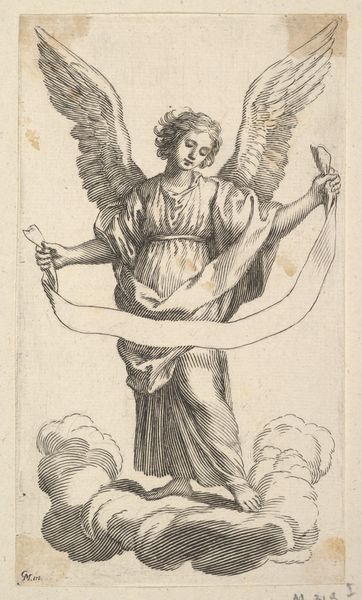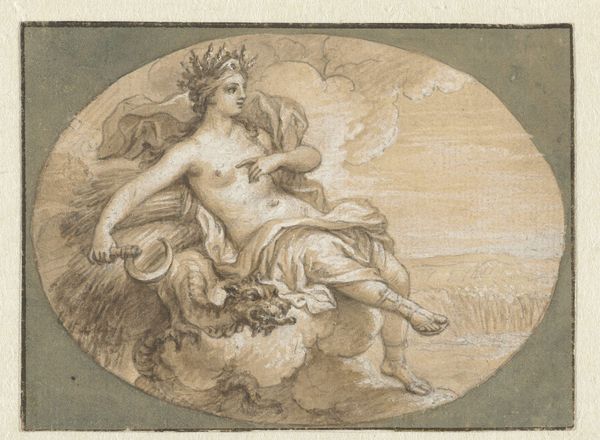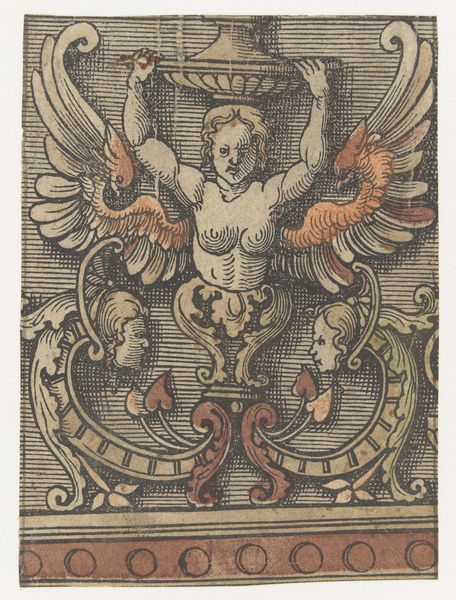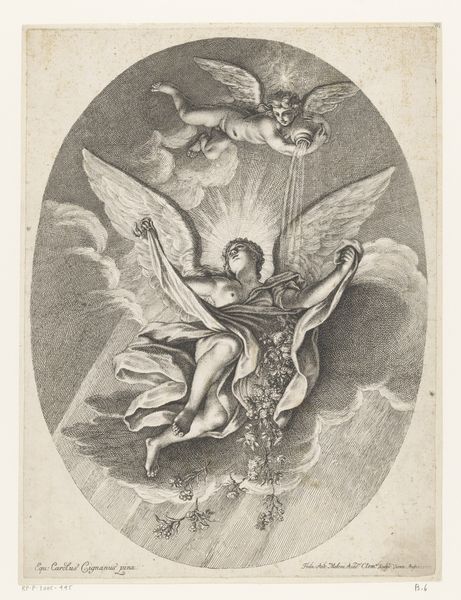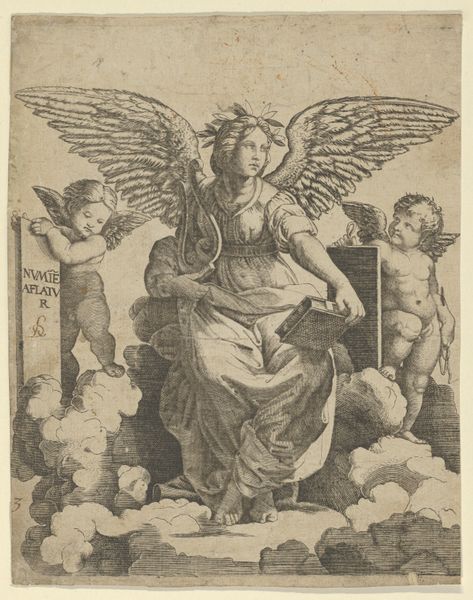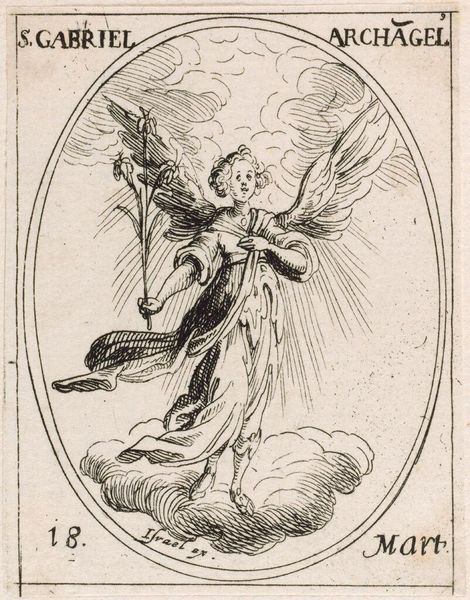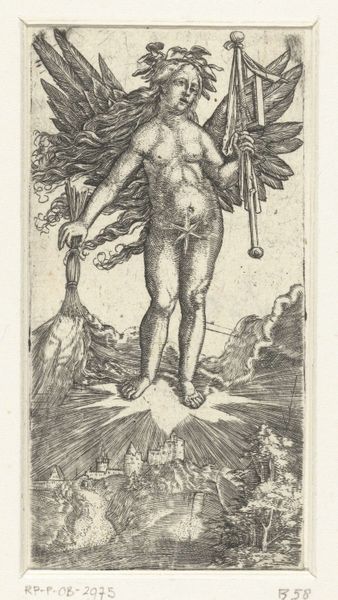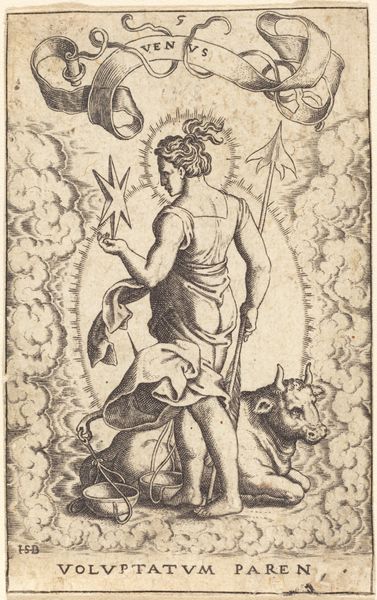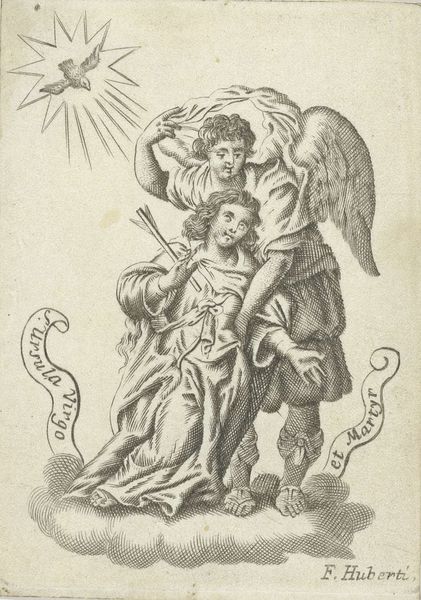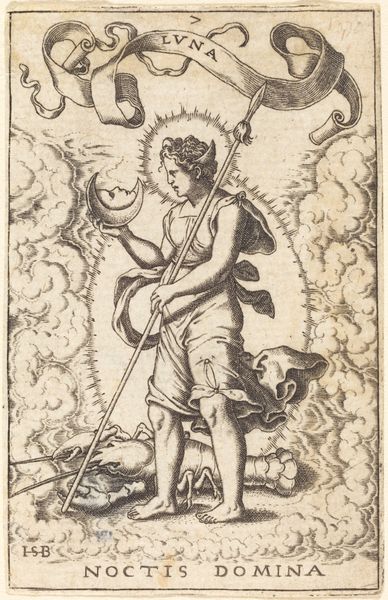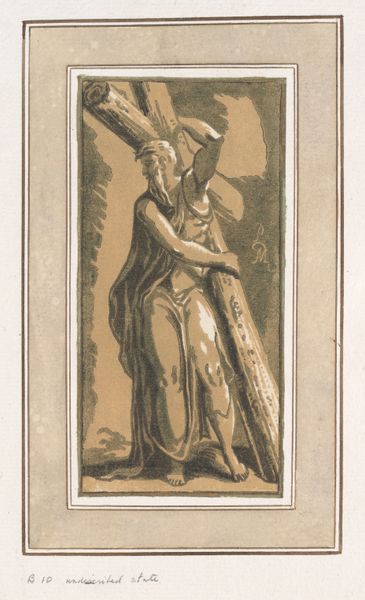
La Victoire, from the playing cards (for quartets) "Costumes des Peuples Étrangers" 18th century
0:00
0:00
drawing, coloured-pencil, print, engraving
#
portrait
#
drawing
#
coloured-pencil
# print
#
coloured pencil
#
costume
#
engraving
#
watercolor
#
rococo
Dimensions: 3 3/16 × 2 1/16 in. (8.1 × 5.3 cm)
Copyright: Public Domain
Curator: This card, titled "La Victoire," or "Victory," comes from a set of playing cards dating back to the 18th century, part of a series called "Costumes des Peuples Étrangers"—"Costumes of Foreign Peoples." It combines printmaking techniques, likely engraving and colored pencil, along with watercolor. Editor: Well, my immediate impression is one of buoyant optimism, a sort of Rococo fantasy. The figure floats on a grey cloud, arms outstretched as if bestowing blessings. Curator: Indeed. Note the figure's attire – it appears to be an allegorical costume representing Victory, rather than any specific cultural dress, despite the series' focus. The coloring looks like it has been applied by hand, no doubt involving careful labor and many helping hands. Editor: I see. The figure holds both a laurel wreath and a bundle of what seems to be palm fronds, traditional symbols of triumph and peace. Even the pose exudes a gentle benevolence rather than militaristic power. And, note the mathematical sequence up top: "3=6=9." An unusual inclusion in a card otherwise festooned with the game of love, judging by the poetic pronouncements ringing the illustration. Curator: The choice of clothing is certainly important; it speaks to the period's fascination with exoticism, filtered through a lens of idealized representation, likely reflecting the demands of consumer culture in 18th century France, where such cards were made as fashionable novelties. Editor: Precisely. I think these cards gave people more than just the rules of the game. Through its imagery of Victory – winged and wreathed – this simple card taps into deep wells of aspiration and collective memory, offering a tangible symbol of hope. It’s interesting that such grand emotions are writ on what we might see as fairly flimsy and cheap ephemera. Curator: Yes, and we mustn't overlook the process: printed then hand-colored, produced at scale. What were the modes of its production? It is likely the image’s cultural worth increased by being included within such mass production. Editor: Absolutely, by understanding these visual symbols in context, we glimpse not only aesthetic tastes but also societal dreams and values being circulated via print and disseminated amongst ordinary folks. Curator: Examining this playing card, we've touched upon both its material creation and its symbolic richness, seeing it as a product and a window onto its time. Editor: Ultimately, these little cards demonstrate the power of imagery and the enduring appeal of archetypes in even the most fleeting aspects of our lives.
Comments
No comments
Be the first to comment and join the conversation on the ultimate creative platform.
